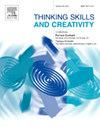Exploring the differences in response characteristics to teacher scaffolding between the high- and low-performing groups during collaborative problem solving
IF 3.7
2区 教育学
Q1 Social Sciences
引用次数: 0
Abstract
Studies have highlighted the crucial role of student response to teacher scaffolding in achieving effective instructional intervention. This response, encompassing what students have said and done after receiving teacher scaffolding, can be categorized as either immediate uptake or delayed use according to the length of responding time. However, the empirical exploration of this statement in collaborative problem solving (CPS) context remains scarce, with few in-depth research investigating the specific differences in student response to teacher scaffolding within the context of CPS, especially in terms of immediate uptake and delayed use. This study aims to investigate student response to teacher scaffolding in a comprehensive perspective by comparing the immediate uptake and delayed use between high- and low-performing groups in CPS. Specifically, the distinction between high- and low-performing groups is based on the academic outcomes of their completed collaborative problem solving tasks. Employing an integrated method combining content analysis and sequential analysis, videos and discourse data were collected and analyzed to reveal the response characteristics of selected groups to teacher scaffolding throughout the activity. The results indicated that: (1) For immediate uptake, the high-performing groups were more likely to repeat, ask questions, and apply the teacher scaffolding, whereas the low-performing groups tended to respond, ignored or kept silent to the teacher scaffolding; (2) For delayed use, the low-performing groups exhibited less delayed use to teacher scaffolding compared to the high-performing groups, and the high-performing groups had a higher proportion of delayed uses in repeating and applying. (3) For response sequence from immediate uptake to delayed use, the high-performing groups tend to consistently use teacher scaffolding, whereas low-performing groups prefer to use it after responding or repeating the content of teacher scaffolding. Drawing upon these findings, this study proposed implications for educators on the use of teacher scaffolding in CPS, which will aid learners in more effectively engaging in collaborative problem solving tasks.
探讨高、低绩效组在合作解决问题时对教师脚手架的反应特征差异
研究强调了学生对教师脚手架的反应在实现有效的教学干预中的关键作用。这种反应,包括学生在接受教师指导后所说和所做的事情,根据反应时间的长短可以分为立即接受或延迟使用。然而,在协作解决问题(CPS)背景下对这一说法的实证探索仍然很少,很少有深入的研究调查在CPS背景下学生对教师脚手架的反应的具体差异,特别是在立即吸收和延迟使用方面。本研究旨在通过比较高、低表现群体对教师脚手架的即时吸收和延迟使用,从综合的角度探讨学生对教师脚手架的反应。具体来说,高绩效组和低绩效组之间的区别是基于他们完成的协作解决问题任务的学术成果。采用内容分析与序列分析相结合的综合方法,收集并分析视频和话语数据,揭示活动过程中选定人群对教师脚手架的反应特征。结果表明:(1)在即时理解方面,高绩效组更倾向于重复、提问和应用教师框架,而低绩效组对教师框架倾向于回应、忽略或保持沉默;(2)在延迟使用方面,低绩效组对教师脚手架的延迟使用比高绩效组少,高绩效组在重复和应用方面的延迟使用比例更高。(3)从立即接受到延迟使用的反应顺序,高绩效组倾向于持续使用教师脚手架,而低绩效组倾向于在回应或重复教师脚手架内容后使用教师脚手架。根据这些发现,本研究提出了在CPS中使用教师脚手架对教育者的启示,这将有助于学习者更有效地参与合作解决问题的任务。
本文章由计算机程序翻译,如有差异,请以英文原文为准。
求助全文
约1分钟内获得全文
求助全文
来源期刊

Thinking Skills and Creativity
EDUCATION & EDUCATIONAL RESEARCH-
CiteScore
6.40
自引率
16.20%
发文量
172
审稿时长
76 days
期刊介绍:
Thinking Skills and Creativity is a new journal providing a peer-reviewed forum for communication and debate for the community of researchers interested in teaching for thinking and creativity. Papers may represent a variety of theoretical perspectives and methodological approaches and may relate to any age level in a diversity of settings: formal and informal, education and work-based.
 求助内容:
求助内容: 应助结果提醒方式:
应助结果提醒方式:


